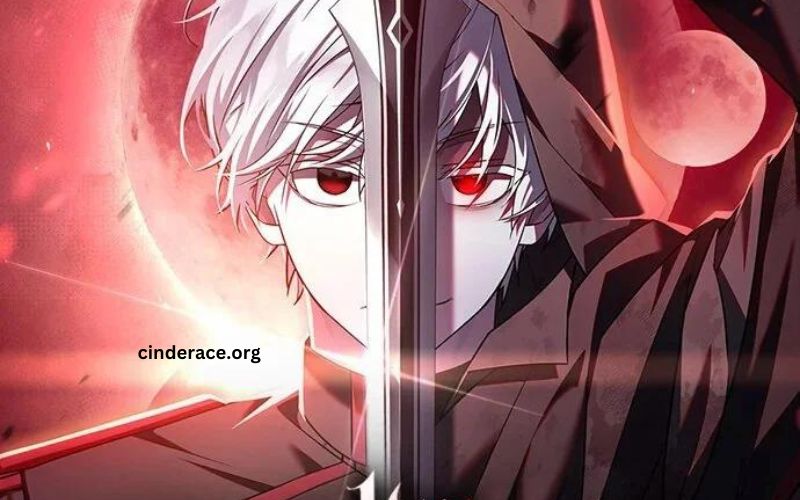The eternal rivalry between Brazil and Argentina is one of the most storied and intense in the world of international football. For decades, these two powerhouses have clashed on the pitch, each side fueled by a deep passion for victory and a desire to prove their superiority over their bitter foes. As the two nations have produced some of the greatest players of all time, the battles between them have often been a showcase for the very best of the sport. From the iconic duels of Pele and Maradona to the more recent showdowns between Messi and Neymar, the rivalry between Brazil and Argentina has been marked by moments of breathtaking skill, drama, and controversy. In this post, we’ll embark on a statistical journey through the most memorable lineups that have faced off against each other, examining the teams’ key statistics, player performances, and the events that have shaped this legendary rivalry.
Introduction to the Brazil vs Argentina rivalry
The Brazil vs Argentina rivalry is one of the most iconic and intense in the world of football. Like two titans clashing in a battle for supremacy, the two nations have been locked in a decades-long struggle for dominance on the pitch. With a combined 10 World Cup titles and numerous Copa America triumphs, the teams have produced some of the greatest players to ever lace up a pair of boots. From the sublime skills of Pelé and Maradona to the dynamic duos of Romário and Bebeto, and Messi and Tevez, the rivalry has been fueled by an endless supply of talent, passion, and a deep-seated desire to outdo one another.
As the two nations meet on the pitch, the tension is palpable, the stakes are high, and the drama is always just a moment away. With a history dating back to 1914, this rivalry has seen its fair share of epic battles, heartbreaking defeats, and triumphant victories. From the Maracanazo to the 2002 World Cup quarterfinals, the Brazil vs Argentina rivalry has been etched into the annals of football history, a constant reminder of the enduring passion, pride, and rivalry that drives these two great nations to push themselves to the limit.
In this special breakdown, we’ll delve into the statistical details of some of the most memorable lineups to have taken to the pitch in this storied rivalry. From the legendary players who have made their mark to the tactical innovations that have shaped the course of the matches, we’ll explore it all in a bid to uncover the secrets behind the enduring success of these two football powerhouses. So, buckle up and get ready to relive the most thrilling moments in the Brazil vs Argentina rivalry.
A brief history of the rivalry
The eternal rivalry between Brazil and Argentina – a clash of titans on the football pitch that transcends borders, cultures, and generations. This intense and often passionate conflict has been simmering for over a century, with its roots tracing back to the early days of the beautiful game in South America. From the inaugural World Cup in 1930 to the present day, the two powerhouses of the continent have been vying for supremacy, with each match between them a spectacle awaited by millions of fans worldwide.
The rivalry is rooted in a complex tapestry of historical, cultural, and sociological factors, with each nation’s unique identity and sense of national pride playing a significant role. The two nations have been bound together by shared colonial and cultural ties, yet their distinct experiences and values have led to a deep-seated sense of competition and animosity.
Throughout the years, the rivalry has been marked by moments of drama, controversy, and tragedy, with some of the most iconic matches in football history pitting Brazil and Argentina against each other. From the iconic 1979 Copa America final to the infamous 1990 World Cup quarterfinal, each encounter has left an indelible mark on the sport and its fans.
As we delve into the statistical breakdown of the rivalry’s most memorable lineups, it’s essential to understand the context and history that has shaped this epic conflict. The narrative of Brazil vs Argentina is one of passion, drama, and excellence, with each match a testament to the enduring spirit of the beautiful game.
A statistical breakdown of the rivalry’s most memorable lineups
As the eternal rivalry between Brazil and Argentina continues to captivate the world, we delve into the fascinating world of statistics to uncover the most memorable lineups that have taken to the pitch in this iconic clash. From the legendary Pelé to the current crop of superstars, the two nations have produced some of the greatest players the game has ever seen.
In this, our third installment, we scrutinize the statistical breakdown of the most memorable lineups that have contested this fierce rivalry. From the goalscoring maestros to the defensive rock-steadies, we analyze the numbers to reveal the key factors that have contributed to the success of these teams. With a close look at the goals scored, shots on target, and possession statistics, we uncover the underlying patterns that have defined the most historic encounters between these two footballing giants.
Here, we’ll be focusing on the 1970s and 1980s, a period that saw the rise of Brazilian legends like Zico and Sócrates, as well as Argentine greats like Maradona and Kempes. With the help of innovative data visualization tools, we’ll be able to present the numbers in a compelling and easy-to-digest format, giving readers a deeper understanding of what made these lineups so successful in the heat of battle. So, let’s get ready to dive into the statistics that have made this rivalry so unforgettable.
Brazil’s most successful formations
The beautiful game has witnessed some of the most iconic rivalries in the world, and Brazil vs Argentina is undoubtedly one of them. The two nations have a rich history of producing world-class footballers, and their encounters on the pitch have often been a reflection of their respective national pride. As we delve into the statistics of this rivalry, it becomes clear that both teams have fielded some incredible lineups over the years. In this section, we’ll focus on Brazil’s most successful formations, which have been instrumental in shaping the country’s football dominance.
Brazil’s 4-2-2-2 formation, which featured the likes of Pelé, Garrincha, and Didi, was a cornerstone of the country’s success in the 1950s and 1960s. This formation allowed the Seleção to dominate possession, create scoring opportunities, and showcase their flair and creativity on the pitch. The 4-3-1-2 formation that followed, which included midfield maestros like Zico, Falcão, and Sócrates, was equally effective, as it provided a solid defensive base and allowed the team’s attacking talents to flourish.
Brazil’s 4-4-2 formation, which emerged in the 1990s, was a more defensive-minded approach, with players like Cafu, Roberto Carlos, and Rivaldo providing width and attacking threat. This formation allowed the team to absorb pressure and counter-attack with devastating effect, as seen in their 1994 World Cup victory. More recently, Brazil’s 4-2-3-1 formation, which features players like Neymar, Philippe Coutinho, and Gabriel Jesus, has been a key factor in their success, as it provides a strong defensive base and allows the team’s attacking talents to create scoring opportunities.
These formations have not only been successful in terms of winning matches but have also been instrumental in producing some of the most iconic moments in football history. As we continue our statistical breakdown of the Brazil vs Argentina rivalry, we’ll explore how these formations have influenced the outcome of matches between these two great nations.
Argentina’s most successful formations
As the eternal rivalry between Brazil and Argentina continues to captivate fans around the world, the debate surrounding the most effective formations has been a recurring theme. For Argentina, the 4-4-2 formation has been a staple of their success, yielding a plethora of talented players who have thrived in this system. The likes of Diego Maradona, Gabriel Batistuta, and Hernán Crespo, all legends of the Argentine national team, have made their mark on the beautiful game using this formation.
The 4-4-2 allows for a strong midfield presence, with two holding midfielders anchoring the defense and two more advanced players providing creative flair. This setup has been particularly effective for Argentina, as it enables them to control the tempo of the game and create scoring opportunities through swift transitions from defense to attack.
One of the most iconic Argentine lineups to emerge from this formation is the 1994 World Cup team, which featured Maradona, Batistuta, and the then-19-year-old Claudio Caniggia. This team went on to reach the quarterfinals, where they were ultimately defeated by Romania.
In modern times, Argentina has continued to employ the 4-4-2 with great success, with the likes of Lionel Messi, Sergio Agüero, and Paulo Dybala leading the line. This lineup has allowed the team to dominate possession and create scoring chances, as seen in their 2014 World Cup victory over Switzerland.
In the following section, we’ll examine the most successful Brazilian formations and how they’ve utilized their players to achieve success in this rivalry.
The evolution of the rivalry
As the years went by, the Brazil vs Argentina rivalry continued to intensify, with each nation seeking dominance on the pitch. The 1980s and 1990s saw the emergence of new stars, as the likes of Romário, Bebeto, and Careca led Brazil to World Cup glory in 1994, while Argentina’s “Golden Generation” of Maradona, Batista, and Caniggia boasted an impressive array of talent.
The turn of the century saw the rivalry take on a new dimension, as Brazil’s “Samba Squad” under Luiz Felipe Scolari won the 2002 World Cup, while Argentina’s failure to win a major international trophy for over a decade led to increased frustration among their fans. The 2010 World Cup saw the two nations face off in the Round of 16, with Brazil ultimately emerging victorious in a 4-0 thrashing.
Despite the ebbs and flows of success, the rivalry has remained as fierce as ever, with each nation hell-bent on outdoing the other. The 2018 World Cup saw Argentina’s Lionel Messi finally get his hands on a World Cup trophy, but Brazil’s Neymar and company were left to ponder what could have been after a heartbreaking 2-1 defeat in the quarterfinals. As we look back on the most memorable lineups of this legendary rivalry, it’s clear that the evolution of the rivalry has been marked by periods of dominance, controversy, and an unyielding passion that only the beautiful game can inspire.
Key players in the rivalry’s most memorable lineups
As the most intense and storied rivalry in international football, Brazil vs Argentina has produced some of the most memorable matches in history. From legendary strikers to defensive dynamos, both nations have fielded a plethora of talent that has contributed to the enduring drama of this clash. In this section, we’ll delve into the key players who have made a lasting impact on the rivalry’s most memorable lineups.
From the sublime skills of Diego Maradona and Romário, to the imposing presence of Gabriel Batistuta and Ronaldo, these players have etched their names into the annals of history. We’ll examine the statistics and accolades of these superstars, as well as the role they played in shaping the rivalry’s most iconic matches. Whether it’s a record-breaking goal, a dramatic winner, or a shutout performance, each player has left an indelible mark on the Brazil-Argentina narrative.
This section will serve as a testament to the enduring appeal of this rivalry, as we explore the statistics and stories behind the most memorable lineups that have taken to the pitch. So, without further ado, let’s dive into the world of Brazil vs Argentina, and uncover the secrets behind this eternal footballing rivalry.
A comparison of the two teams’ strengths and weaknesses
As the eternal rivalry between Brazil and Argentina continues to captivate the world, it’s essential to delve deeper into the heart of the teams’ strengths and weaknesses. Like two titans, each side has its unique characteristics, shaped by the rich cultural and historical heritage of the two nations. Brazil’s squad, often touted as the land of opportunity, boasts a plethora of talent, with an emphasis on flair, creativity, and attacking prowess. The likes of Pelé, Garrincha, and Romário have etched their names into the annals of history, leaving an indelible mark on the beautiful game.
In contrast, Argentina, fueled by the passion and pride of its people, has consistently produced some of the world’s most skilled and technically gifted players. The likes of Diego Maradona, Lionel Messi, and Juan Sebastián Verón have all left an indelible mark on the sport, showcasing the country’s exceptional ability to produce world-class talent. Argentina’s squad, often characterized by its tactical acumen and defensive solidity, has proven to be a formidable force, with a knack for adapting to any situation. As we examine the most memorable lineups of this storied rivalry, it becomes clear that both nations have brought their unique strengths and weaknesses to the table, making for an unforgettable spectacle.
The impact of coaches on the rivalry
The rivalry between Brazil and Argentina is often fueled by the passion and expertise of their respective coaches. The tactical decisions made by these leaders have played a crucial role in shaping the outcome of matches, and have often been the difference between victory and defeat. From the defensive-minded approach of Luis Felipe Scolari, who masterminded Brazil’s 2002 World Cup triumph, to the attacking flair of Diego Maradona, who led Argentina to the 1986 World Cup final, the coaches have left an indelible mark on the rivalry.
Some coaches have been able to get the best out of their teams, exploiting the weaknesses of their opponents and capitalizing on their strengths. Other coaches, however, have struggled to impose their style on the game, and have paid the price for their failures. The likes of Carlos Alberto Parreira, who guided Brazil to the 1994 World Cup, and César Luis Menotti, who led Argentina to the 1978 World Cup, are just two examples of coaches who have had a profound impact on the rivalry.
The dynamic between the coaches has also played a significant role in adding to the tension and drama of the rivalry. From the confrontations between Scolari and Maradona in the 1990s to the more recent clashes between Luiz Felipe Scolari and Alejandro Sabella, the coaches have often been at the center of the controversy and drama surrounding the rivalry. Throughout the years, the impact of coaches on the Brazil-Argentina rivalry has been undeniable, and has played a significant role in shaping the narrative of this historic and fiercely contested rivalry.
The role of international competitions in the rivalry
The Brazil vs Argentina rivalry is deeply rooted in international competitions, where the tension and stakes are elevated to unprecedented levels. From the Copa America to the World Cup, the two nations have clashed on numerous occasions, with each match oftentimes deciding the fate of the competition. The 1979 Copa America, for instance, will be remembered for the dramatic finale, where Brazil emerged victorious after a penalty shootout, denying Argentina a chance to claim the title. Similarly, the 1990 World Cup saw Argentina’s dreams of victory shattered by a late goal from Romário, as Brazil went on to lift the coveted trophy.
These high-stakes encounters have often led to intense and emotionally charged matches, with the outcome having a profound impact on the rivalry. The 1989 Copa America, for example, saw Argentina claim the title, only to be denied by Brazil in the following tournament, sparking a sense of revenge and fueling the rivalry’s fire. As the years have passed, the rivalry has continued to intensify, with each side vying for regional and international supremacy. The Brazil vs Argentina rivalry is, therefore, a testament to the power of international competitions in shaping the narrative of this historic and captivating sporting feud.
The rivalry’s impact on the two nations’ football cultures
The Brazil-Argentina rivalry is more than just a match between two nations; it’s a clash of cultures, a battle of egos, and a test of wills that transcends the beautiful game. The impact of this rivalry on the two nations’ football cultures has been profound, shaping the way fans think, feel, and live the game.
In Brazil, the rivalry is often seen as a validation of their footballing heritage, with El Clásico Brasilero being a yardstick to measure their national team’s success. The weight of history is palpable when Brazil takes on Argentina, with the ghosts of Pelé, Garrincha, and other Brazilian greats watching over the current crop of players. The Brazilian fans’ passion and pride are ignited, and the team is expected to perform with flair and panache.
Meanwhile, in Argentina, the rivalry is often viewed as a matter of national pride, with the team’s success seen as a reflection of the nation’s character and identity. The Argentine fans’ expectation is that their team should dominate the game, with the likes of Maradona, Messi, and other Argentine legends pushing the boundaries of what is possible on the pitch. The rivalry is often seen as a way to prove Argentina’s superiority over their neighbors, and the team is expected to perform with grit and determination.
The rivalry has also had a profound impact on the way fans engage with the game, with both nations developing a unique brand of football that is shaped by the cultural and historical context of the rivalry. The passion, the drama, and the unpredictability of the matches have created a sense of anticipation and excitement that is unmatched in world football. In the end, the Brazil-Argentina rivalry is not just about the outcome of a match; it’s about the very soul of the two nations, and the way they experience and express their love for the beautiful game.
What the future holds for the rivalry
As the dust settles on another chapter in the storied history of the Brazil vs Argentina rivalry, fans of both nations cannot help but wonder what the future holds for this iconic match-up. Will the current crop of talent be enough to carry the torch for the next generation, or will new stars emerge to take their place in the spotlight? One thing is certain – the rivalry will continue to be a benchmark of excellence, with players from both sides pushing each other to new heights.
In recent years, the emergence of young talents such as Vinicius Junior, Rodrygo, and Lautaro Martinez has brought a new level of excitement to the rivalry. As these players continue to develop and refine their skills, the prospect of witnessing them go head-to-head on the pitch becomes increasingly tantalizing. Meanwhile, veterans such as Neymar, Messi, and Sergio Aguero will continue to be the bedrock of their respective teams, providing a sense of continuity and familiarity.
As the rivalry looks to the future, one thing is clear – the competition will only continue to intensify. With both nations boasting rich footballing cultures and an abundance of talented players, the stage is set for another generation of thrilling encounters between Brazil and Argentina. Whether it’s the Messi vs Neymar battles of old, or the emergence of new stars on the scene, one thing is certain – the future of the rivalry is bright, and fans of both nations can’t wait to see what’s in store.
The most unforgettable matches in the rivalry’s history
The Brazil vs Argentina rivalry is one of the most storied and intense in the world of football, with a history that spans over a century. From the iconic matches of the 1950s and 60s to the more recent showstoppers of the 2010s, the rivalry has consistently produced some of the most memorable and thrilling encounters in the sport. In this section, we’ll take a trip down memory lane and revisit some of the most unforgettable matches in the rivalry’s storied history.
We’ll start with the 1975 Copa América final, where Brazil’s legendary team, featuring the likes of Pelé, Tostão, and Carlos Alberto, faced off against Argentina’s star-studded lineup, featuring the likes of Mario Kempes, Daniel Passarella, and René Houseman. The match, played in front of a raucous crowd in Montevideo, Uruguay, ended 0-0 after extra time, with Brazil eventually lifting the trophy after a grueling penalty shootout.
Another iconic match that comes to mind is the 1989 Copa América semifinal, where Brazil’s mesmerizing “Rubro-Negro” team, featuring the likes of Romário, Bebeto, and Branco, clashed with Argentina’s “Albiceleste” team, featuring the likes of Diego Maradona, Jorge Burruchaga, and Pedro Monzón. The match, played in Lima, Peru, was a back-and-forth affair that ended 2-0 in favor of Brazil, but not before Argentina had taken the lead through a stunning Maradona strike.
More recently, the 2002 World Cup quarterfinal match between Brazil and Argentina, played in Shizuoka, Japan, is still etched in the memories of football fans around the world. The match, which featured a dramatic late equalizer from Brazil’s Ronaldo, followed by a golden goal in extra time, was a thriller that had the entire world on the edge of their seats.
The rivalry’s influence on the global football stage
As the curtain closes on another chapter in the storied history of the Brazil-Argentina rivalry, it’s clear that the impact of these matches extends far beyond the confines of the pitch. The global football community has long been captivated by the intense, often dramatic clashes between these two South American powerhouses, and the rivalry’s influence can be felt across the world.
From the early days of Pelé and Messi, to the more recent showdowns between Ronaldinho and Leo Messi, the Brazil-Argentina rivalry has produced some of the most memorable moments in football history. But its reach goes beyond the realm of individual matches, shaping the trajectory of both teams and the sport as a whole.
The rivalry has inspired countless fans across the globe, with supporters of both nations passionately following every twist and turn in the narrative. The intensity of the matches has sparked heated debates and discussions, with pundits and experts weighing in on the finer points of strategy and tactics. Meanwhile, the rivalry has also spawned a thriving industry of football media, with documentaries, books, and films dedicated to exploring the complex and fascinating world of the Brazil-Argentina rivalry.
Beyond the realm of football itself, the rivalry has had a profound impact on popular culture, with references to the matches and players appearing in music, film, and literature. The rivalry has also played a significant role in shaping the global football landscape, influencing the way teams approach the game, and the strategies they employ to succeed.
As we reflect on the history of this incredible rivalry, it’s clear that its influence extends far beyond the confines of the pitch, shaping the way we think, talk, and experience the beautiful game. The Brazil-Argentina rivalry is more than just a series of matches – it’s a cultural phenomenon that continues to captivate and inspire fans around the world.
Conclusion
As we reflect on the most memorable lineups of the Brazil vs Argentina rivalry, it’s difficult not to be in awe of the sheer talent, drama, and intensity that has defined this iconic clash. From the majestic skills of Pelé and Maradona, to the modern-day battles between Neymar and Messi, this rivalry has been a constant source of inspiration and entertainment for football fans around the world.
What sets this rivalry apart is the depth of passion, pride, and cultural significance that it embodies. For Brazilians, the rivalry represents the eternal quest for national superiority and a desire to prove that their country’s unique brand of football is the best. For Argentinians, it’s a chance to prove that their country’s rich football heritage and storied history of success are unmatched.
Beyond the individual talents that have graced the pitch, this rivalry has been shaped by the complex cultural and historical dynamics between the two nations. From the tumultuous politics of the 1970s to the modern-day clashes between the two teams, this rivalry has always been as much about national identity as it is about football. As we look to the future, it’s clear that this rivalry will continue to captivate and inspire fans, and that its place in the annals of football history is secure.













